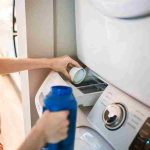Body armor plays a crucial role in protecting individuals in high-risk professions or situations. However, an important question arises: How long does body armor remain effective? This article aims to explore the lifespan of body armor and provide insights into its durability. By understanding the factors that affect its longevity, evaluating its effectiveness over time, and discussing inspection, maintenance, and replacement practices, readers will gain a comprehensive understanding of how to maximize the lifespan of their body armor and ensure their personal safety.
How Long Is Body Armor Good For?
The lifespan of body armor can vary depending on several factors, including the type of armor, the materials used, and how well it is maintained. Generally, body armor is designed to remain effective for around 5 to 10 years. However, it is important to regularly inspect and assess its condition to ensure its ongoing effectiveness.

Understanding Body Armor
Body armor is a vital component of personal protective equipment (PPE) designed to safeguard individuals from ballistic threats. It comes in various types, including soft armor, hard armor, and hybrid armor, each offering different levels of protection. Soft armor typically consists of multiple layers of strong synthetic fibers, such as Kevlar, that work together to absorb and disperse the impact energy of projectiles. On the other hand, hard armor incorporates rigid materials like ceramics or polyethylene plates that are highly effective against rifle rounds and other high-velocity projectiles. Hybrid armor combines elements of both soft and hard armor to provide a balanced approach.
The materials used in body armor construction play a crucial role in determining its effectiveness. Kevlar, a widely used material, exhibits excellent resistance to penetration and fragmentation, making it ideal for soft armor applications. Ceramics, such as boron carbide or alumina, offer exceptional hardness and strength, enabling them to defeat high-velocity projectiles in hard armor. Polyethylene, a lightweight synthetic material, provides both strength and flexibility, making it suitable for both soft and hard armor designs. The combination of these materials allows body armor to mitigate the threat of projectiles and reduce the risk of injury.
Furthermore, body armor effectiveness is defined and classified by the National Institute of Justice (NIJ) standards, which establish the levels of protection provided by different armor types. These standards categorize body armor based on the types of projectiles they can stop, ranging from level IIA (low-velocity handguns) to level IV (armor-piercing rifles). By adhering to these standards, individuals can make informed decisions about the appropriate body armor level for their specific needs and the level of protection required in their line of work or activities.
Factors Affecting The Lifespan Of Body Armor
- Regular Use: The frequency and intensity of use can contribute to wear and tear on the armor, potentially reducing its effectiveness over time.
- Environmental Conditions: Exposure to moisture, extreme temperatures, UV radiation, and chemicals can degrade the materials of the body armor, compromising its integrity.
- Maintenance and Care: Proper cleaning, storage, and maintenance practices are essential for preserving the quality and extending the lifespan of body armor.
- Quality of Materials: The quality of the materials used in the construction of body armor plays a significant role in determining its durability. High-quality materials tend to have a longer lifespan.
- Manufacturer’s Guidelines: Following the manufacturer’s recommendations for usage, inspection, and maintenance is crucial for ensuring the optimal lifespan of the body armor.
- Impact and Stress: Excessive impact or stress, such as bending hard armor plates beyond their limits, can lead to structural damage and reduce the overall lifespan of the body armor.
- Technological Advancements: Advancements in body armor technology can result in longer-lasting and more durable solutions, improving the overall lifespan of body armor.
How To Proper Maintenance And Care?
Proper maintenance and care are essential for ensuring the longevity and effectiveness of body armor. Here are some key practices to consider:
- Regular Inspection: Perform routine inspections of the body armor to check for any signs of wear, damage, or degradation. Look for frayed or damaged stitching, tears in the fabric, or cracks in hard armor plates.
- Cleaning: Follow the manufacturer’s cleaning instructions to maintain the cleanliness of the body armor. Use mild detergents or specialized cleaning solutions recommended for the specific armor type. Avoid harsh chemicals or excessive heat that could potentially damage the materials.
- Storage: Store body armor in a cool, dry place away from direct sunlight and extreme temperatures. Avoid storing it in humid environments as moisture can degrade the materials over time.
- Avoid Excessive Stress: Minimize unnecessary stress on the body armor by handling it with care. Avoid folding or bending hard armor plates beyond their recommended limits, as this can weaken or compromise their integrity.
- Replace Components: If any part of the body armor shows significant damage or wear, including the carrier or straps, consider replacing those components. Properly functioning straps and a secure carrier are vital for ensuring the proper fit and effectiveness of the armor.
- Follow Manufacturer’s Guidelines: Refer to the manufacturer’s guidelines and recommendations regarding the lifespan and care of the specific body armor. They may provide specific instructions or suggestions to ensure optimal performance and longevity.
Tips For Extending The Lifespan Of Body Armor
To extend the lifespan of body armor and maintain its effectiveness, consider the following tips:
- Handle with Care: Handle body armor gently and avoid unnecessary stress or impact. Excessive bending, folding, or rough handling can compromise the integrity and effectiveness of the armor.
- Regular Inspection: Conduct routine inspections to check for any signs of wear, damage, or degradation. Look for loose stitching, tears, cracks, or dents in hard armor plates. Address any issues promptly to prevent further damage.
- Clean as Recommended: Clean the body armor according to the manufacturer’s instructions using approved cleaning solutions or mild detergents. Avoid harsh chemicals or abrasive cleaning agents that may weaken or damage the armor’s materials.
- Replace Components as Needed: If any part of the body armor, such as the carrier or straps, shows significant wear or damage, consider replacing them. Properly functioning components are essential for maintaining the proper fit and performance of the armor.
- Avoid Excessive Moisture: Minimize exposure to excessive moisture, as it can degrade the materials and reduce the effectiveness of the armor. If the armor gets wet, follow the manufacturer’s instructions for drying it thoroughly before storage.
By following these tips, individuals can significantly prolong the lifespan of their body armor, ensuring it remains in good condition and provides reliable protection when it matters most.
Conclusion
In conclusion, understanding the lifespan of body armor is crucial for maintaining its effectiveness in providing personal protection. By considering factors such as the type of armor, materials used, and proper maintenance practices, individuals can maximize the longevity of their body armor. Regular inspections, adherence to manufacturer guidelines, proper storage, and careful handling are essential for extending its lifespan. As technology continues to advance, the future holds promising prospects for even longer-lasting and more durable body armor solutions, ensuring enhanced safety and security for individuals in high-risk environments.
FAQ’s
How often should I inspect my body armor?
It is recommended to inspect your body armor at least once every three months. However, if you engage in activities or work that exposes the armor to more wear and tear, more frequent inspections may be necessary.
Can I clean my body armor in a washing machine?
No, it is generally not recommended to clean body armor in a washing machine. Most body armor should be cleaned by hand using mild detergents or specialized cleaning solutions as directed by the manufacturer.
Can body armor expire?
While body armor does not have an official expiration date, it is generally considered to have a lifespan of around 5 to 10 years. However, it is important to regularly inspect the armor for any signs of wear or damage that may impact its effectiveness.
Can I repair damaged body armor?
It is not recommended to repair body armor on your own. If you notice any damage, it is best to consult the manufacturer or a professional to assess the extent of the damage and determine if the armor can be repaired or if replacement is necessary.
Can I use expired body armor in an emergency situation?
Using expired body armor in an emergency situation is not recommended. Over time, the materials in body armor can degrade, reducing their effectiveness in stopping projectiles. It is crucial to ensure that your body armor is within its recommended lifespan and in good condition to provide optimal protection.





